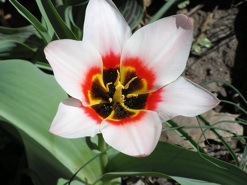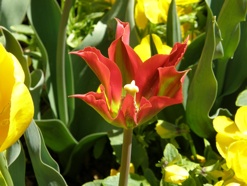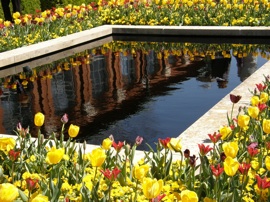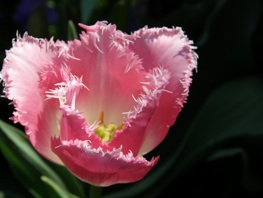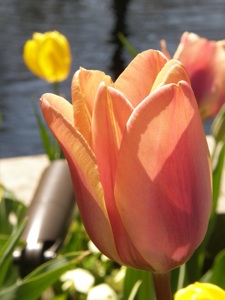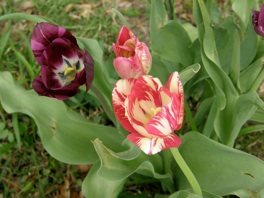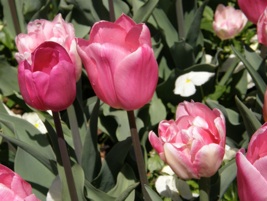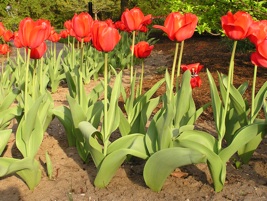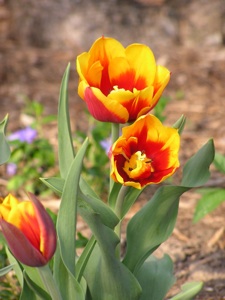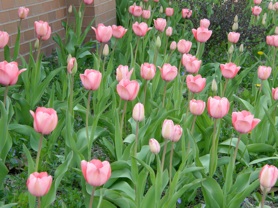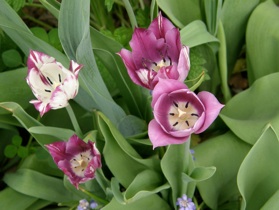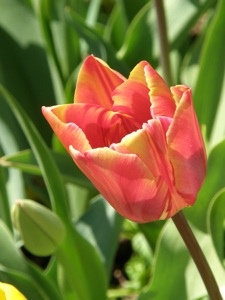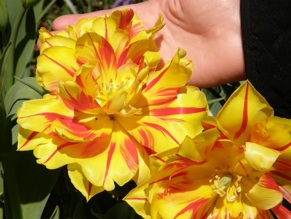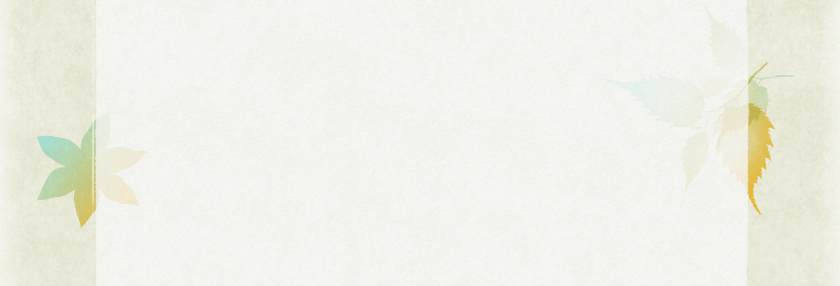Amazing palette of colors
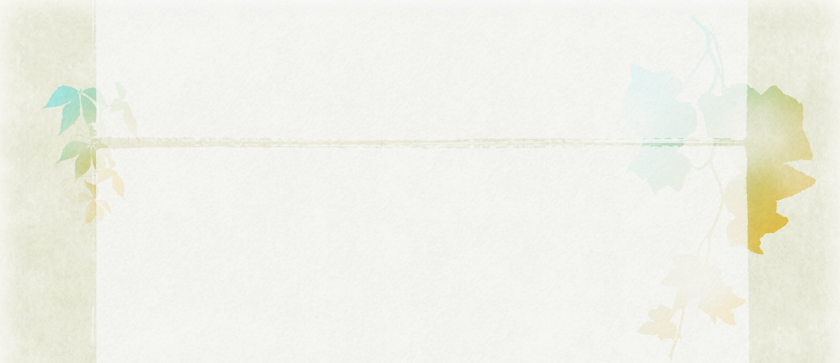
[We took all these pictures in our home town, Urbana, or in the Missouri Botanical Gardens, St Louis]
These lovely spring flowers are the favorite of many people around the world (including Rod). The cheerful bell-shaped blooms with bold colors, unexpected patterns, stripes, and swirls of color herald spring and the end of dull, grey winter. It’s fun to stroll around our neighborhood, spotting tulips and other spring flowers in local gardens and, for a dazzling display of masses of blooms, one of our favorite “shows” is at the Missouri Botanical Gardens in St Louis. I imagine that this is a smaller version of the famous Keukenhof Gardens in Netherlands, the largest bulb park in the world.
Common and relatively inexpensive nowadays, tulips weren’t so in the past and, surprisingly for a flower perhaps, they have a long and colorful history.
A student of mine from Turkey described how Istanbul is a city of tulips every spring and how the mayor decided to restore the parks and gardens to their former glory during the Tulip Period (Lale Devri) of the late 17th and early 18th centuries. He ordered the planting of thousands of bulbs to beautify the city with these Turkish flowers.
Turkish? Ask almost anyone where the tulip comes from and chances are they’ll tell you Holland or Netherlands, as tulips are considered to be as Dutch as windmills and Edam cheese. Think too of the well-known song, “Tulips from Amsterdam”, by Max Bygraves, which begins with these lines: “When it’s spring again I’ll bring again/Tulips from Amsterdam”.
However, tulips’ history in Netherlands is a mere 400-plus years. Tulips as we know them today originated as a wild flower of the lily family in central Asia in areas now considered part of Russia, around the Black Sea, in the Crimea, and from the steppes located north of the Caucasus. In the 1500s when the tulips were first introduced into Europe, these areas belonged to what was called the great Ottoman Empire, also known as the Turkish Empire. It is known that the Turks were cultivating tulips as early as 1,000 AD.
How the tulip got its name is also intriguing. One explanation was it resembled the headgear worn by many people in the Middle East: the turban, also written as "toliban". Changed into Latin, this became "tulipa". The flowers of some tulips do look a bit like a turban, but the actual origin of the word is unknown.
When some European botanists got to know about the tulip in the 1500s, gorgeous illustrations of tulips began to appear. What is strange is that they always included some kind of butterfly, but butterflies seldom land on tulip flowers.
Another anomaly was the famous flamed tulips that became known as "Rembrandt tulips", even though Rembrandt the artist seldom painted flowers. Rather, the name was used for its historical timeframe, as “Tulipomania” occurred during the first half of the seventeenth century when the artists known as the Dutch Masters (including Rembrandt, Frans Hals, Breughel) were most active.
Dutch tulip history traditionally begins in 1593 when botanist Carolus Clusius (1526-1609), who worked in Prague and Vienna with medicinal herbs, came to Holland to become head botanist of the new botanical garden or "hortus" at the University of Leiden. He brought part of his collection, including his tulips, along with him. He planted the first known tulips in Holland behind a university building in a garden that was very small even in those days. Cluyt, a skilled botanist and pharmacist in the old town of Delft, assisted him in Leiden.
Clusius was given these tulips by a man named De Busbecq, who was the ambassador to the court of Sultan Suleiman in Constantinople, the seat of the Ottoman Empire, where he encountered tulips. There has been a lot of discussion about which tulip species were the first ones to be planted in Leiden. Most botanists believe that not all were actually wild species. That is because it is documented that the Turks were already crossing and selecting (hybridizing) tulips at least as early as the time of Sultan Suleiman (1494 until 1566). It is very likely that Clusius' collection included some of these Turkish hybridized cultivars.
Soon after Clusius arrived in Leiden, the first books documenting all kinds of known plants appeared. It is interesting that the tulip was often illustrated, even on the covers. This was unusual because, in the 1500s and 1600s, botanists considered the most important plants those that could be eaten or used as medicines. The tulip could be used for neither.
Clusius apparently valued his tulip bulbs strictly in scientific terms. He also refused to give bulbs away or even to sell them. Some local people saw the possibility of making money with the bulbs and they wanted some to cultivate and sell. But Clusius adamantly refused to give any up. So, several frustrated bulb buyers stole part of Clusius' collection, a deed that was probably the start of the Dutch tulip industry.
The Dutch cultivation of tulips began slowly in the 1600s, in very small private plots, mainly between the North Sea and Amsterdam in the region bounded by the prosperous cities of Leiden and Haarlem. This region is still called the "Bollenstreek" or the bulb-growing region. At first the tulip was a beautiful rarity that only the very wealthy could afford. Tulips became a status symbol that wealthy Dutch and European aristocrats and newly-wealthy merchant classes had to have. The most expensive flowers were the Rembrandt-type or bi-colors with distinctive flames or broken stripes of color, each one unique in its patterns. Solid-colored tulips were not fashionable at all. A buying and collecting mania evolved. The Puritans opposed the collecting mania and the foolish speculation on bulbs but the "tulip disease" continued to spread. This craziness reached its peak in the years 1634 to 1637, a time known as "The Foolish Tulip Trade", "The Wild Tulip Speculation", or "Tulipomania".
This period is often compared to the more modern Stock Market Craze worldwide of the 1920s. Buying and selling tulips became not just a hobby for the very rich, but also an activity for all kinds of craftsmen as well. By the 1620s tulips were being sold by the bulb, but in 1634, people switched over to selling rare varieties by weight.
Apparently some tulips were sold for up to 3,000 guilders per bulb. To try and understand what this amount meant at the time, some historians list what it could buy: two loads of wheat, four loads of rye, four fat oxen, five pigs, 12 sheep, two hogsheads of wine, four barrels of beer, two barrels of butter, a thousand pounds of cheese, one complete bed, one suit of clothes, one silver tankard and a sizeable wagon to haul it all away. An astounding number.
Many of these transactions did have a notarized bill of sale, but some tulips that were traded never even existed. This could really happen because people could only supply actual bulbs during the period from July through November, when they were out of the ground. During the rest of the year, the bulb was below the soil surface (and therefore not visible). So, the Dutch word "windhandel," meaning "wind trading", seems an apt term.
In 1637 the tulip trading crashed, and people who thought of themselves as extremely rich were reduced to poverty overnight. Despite the difficulties linked to the wild speculation in tulips, the tulip continued to be the most popular garden flower for a long time.
Since the 1600s, tulip growing has been a major crop for Netherlands. Today nearly half of its acres of flower bulb farms are planted with tulip bulbs (23,412 acres). Other bulbs ranking highest in acreage (but far below the tulip) are lilies, gladioli, narcissi and hyacinth. Every year about three billion tulip bulbs are produced, of which approximately two billion are exported, about half to the USA, followed closely by Japan and Germany.
In the early 1990s, in celebration of the 400th anniversary of the arrival of the tulip in Holland, the curators of the Leiden botanical garden unveiled a smaller recreation of Clusius' original garden in another location within the Hortus. The garden is laid out according to historic plans with the tulips grown by Clusius, as well as other plants from Clusius' time, including plants then recently discovered in the New World such as the potato, tomato, corn, and tobacco.
I’m already looking forward to next year’s tulips. Thanks to a visiting scholar from Netherlands, who brought us a box of bulbs from her country, we’ll plant and enjoy (hopefully) some Dutch tulips next spring in our garden.








